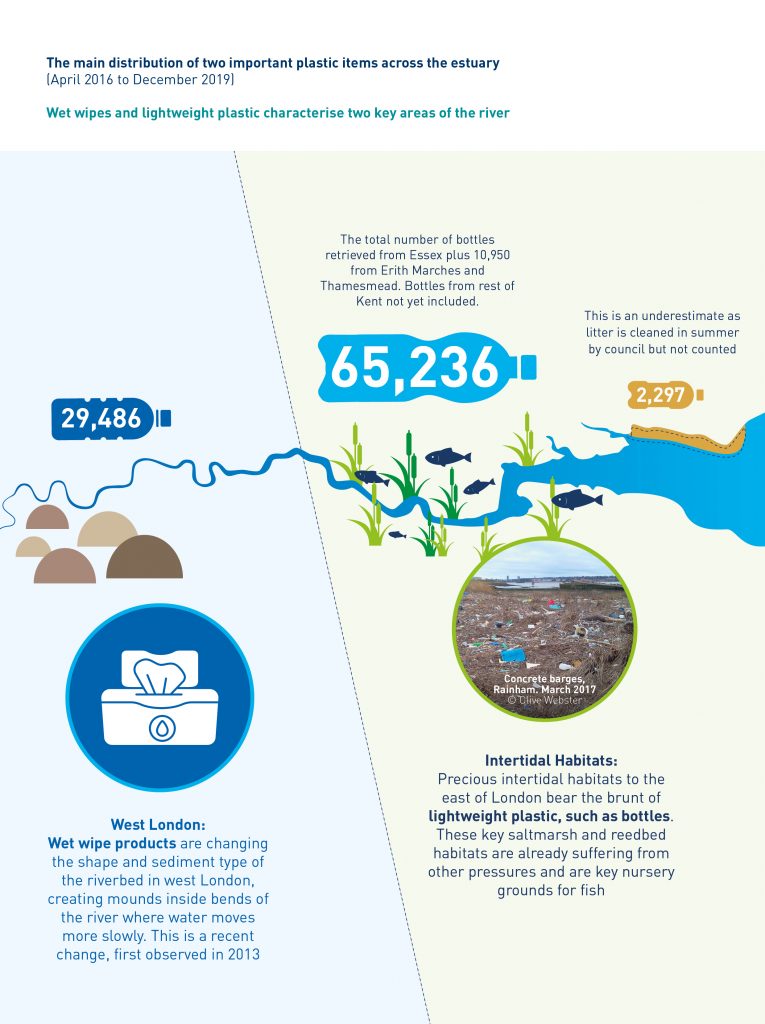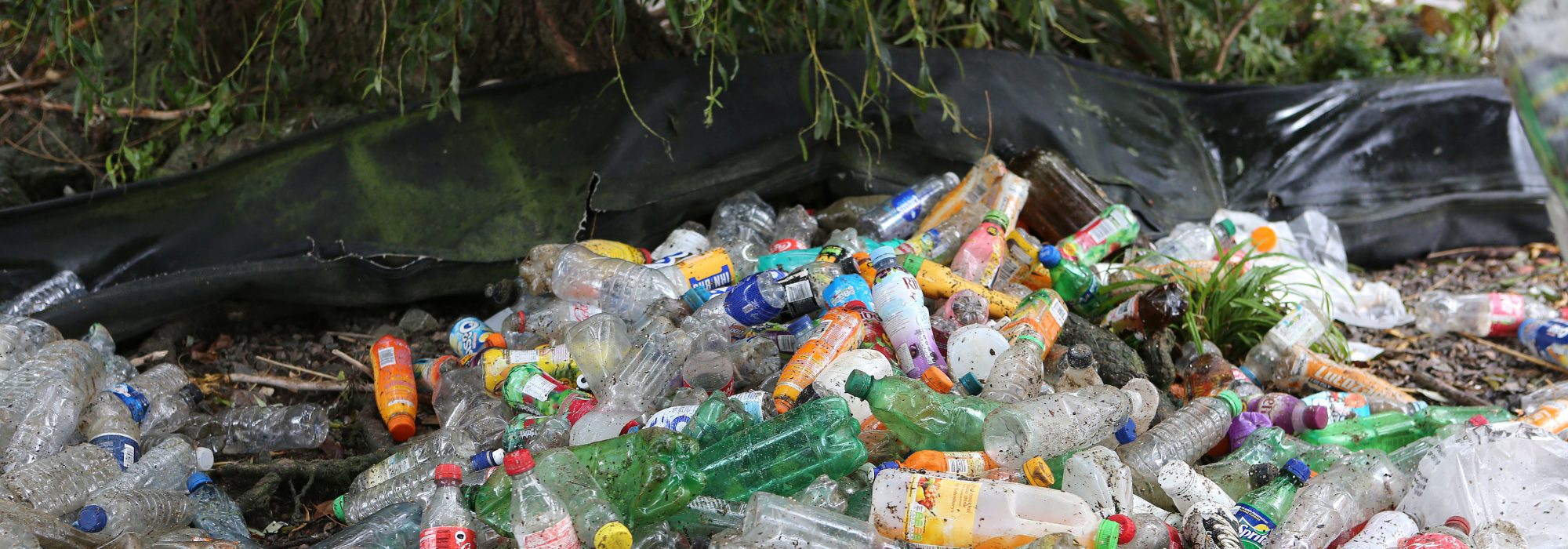Thames Litter – Our evidence
We are measuring the impact of litter in the Thames
The Thames faces a flood of plastic pollution that chokes ecosystems and harms wildlife. Sewage spills, run-off from roads and fly tipping are common routes to the river but over-production of single-use plastic is the key driver of the pollution.
Our dedicated River Action Groups and citizen scientists have amassed a wealth of data on the quantity of litter in the tidal Thames. The North Thames Estuary Litter Picking Group and Beachcare have also generously shared their extensive dataset from Essex.
Our findings
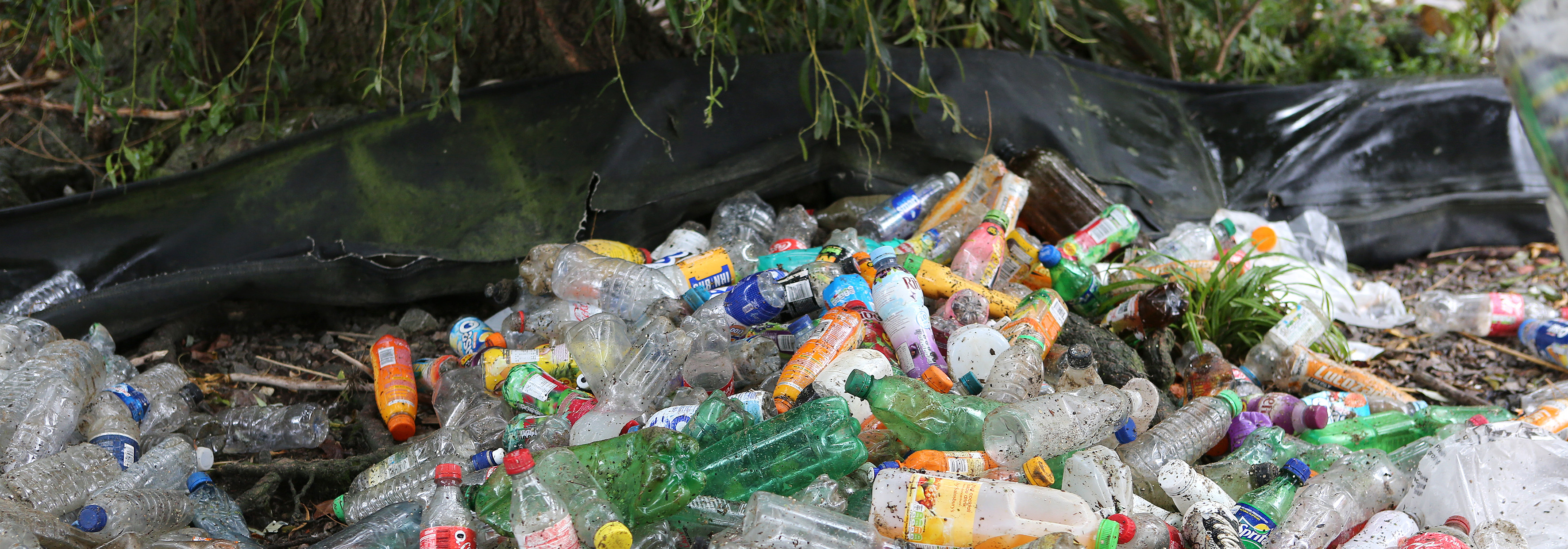
Total wet wipes
Total bottles
Total bin bags of litter
Plastic wet wipe products are physically changing the shape of the riverbed in London
Single-use plastic items make up 83% of all counted items on the foreshore (excluding glass fragments)
Water bottles represent almost half of all the drink bottles found in the Thames
65% of the plastic bottles were found on precious saltmarsh and reedbed habitats
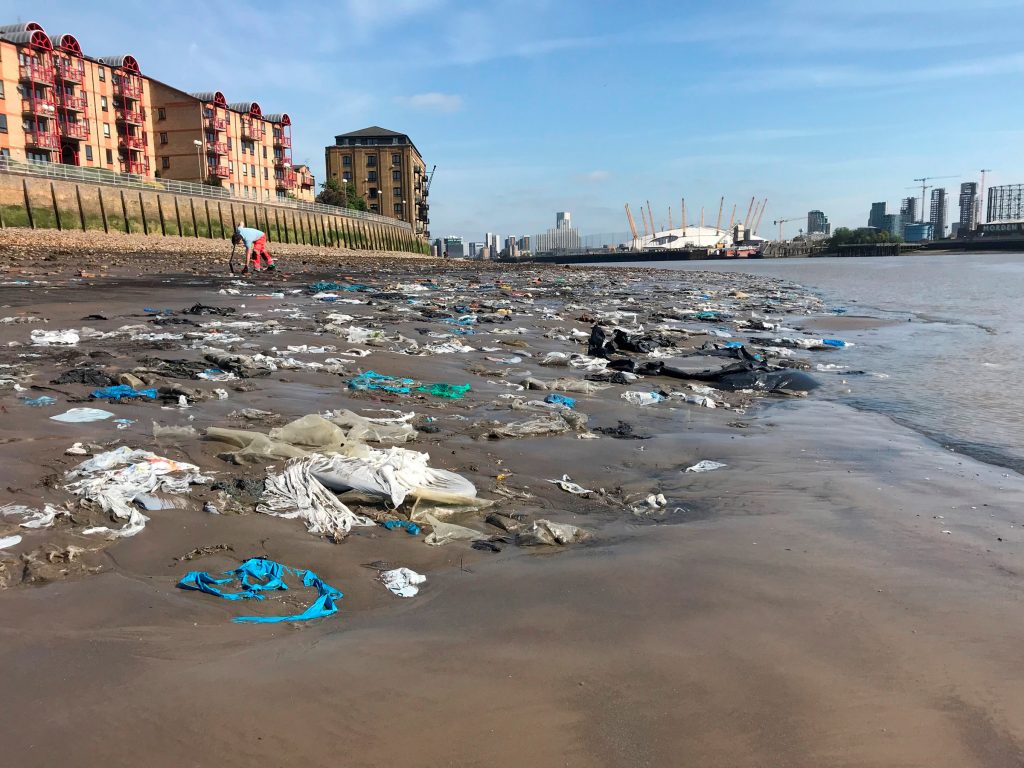
Volunteers survey the litter on the riverbed at sites between Hammersmith and the Isle of Dogs. For our results between 2015 and 2020, see Plastic Pollution in the Tidal Thames. In 2022, we expanded the number of sites and ensured regular intervals of monitoring to track changes over time.
The data are used to determine if measures to reduce litter are working and to hold polluters to account.
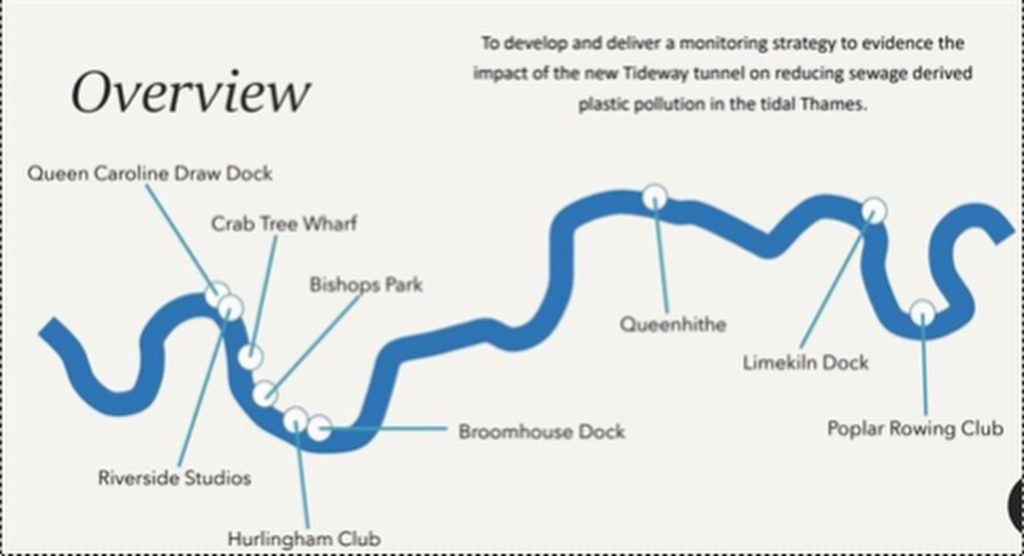
Volunteer or become a citizen scientist on the tidal Thames
